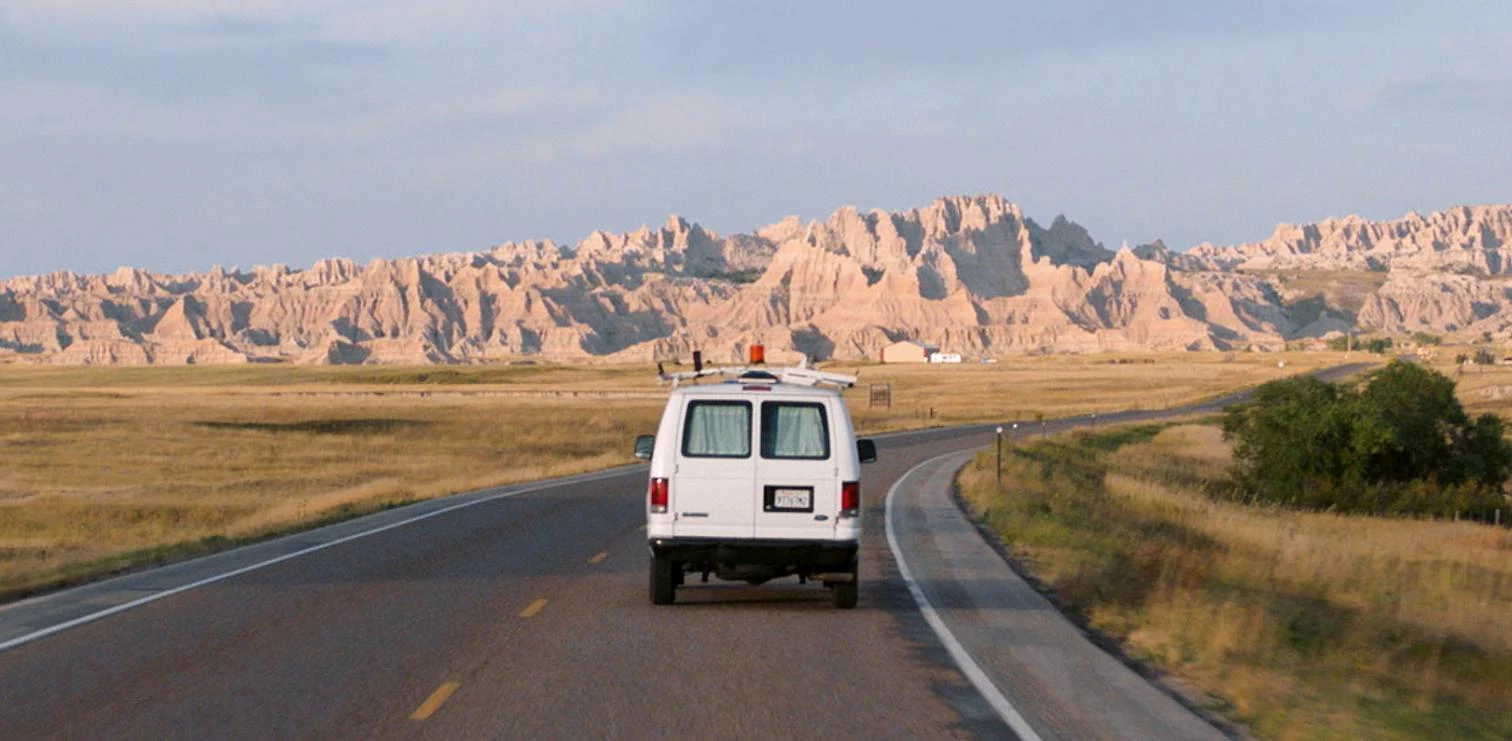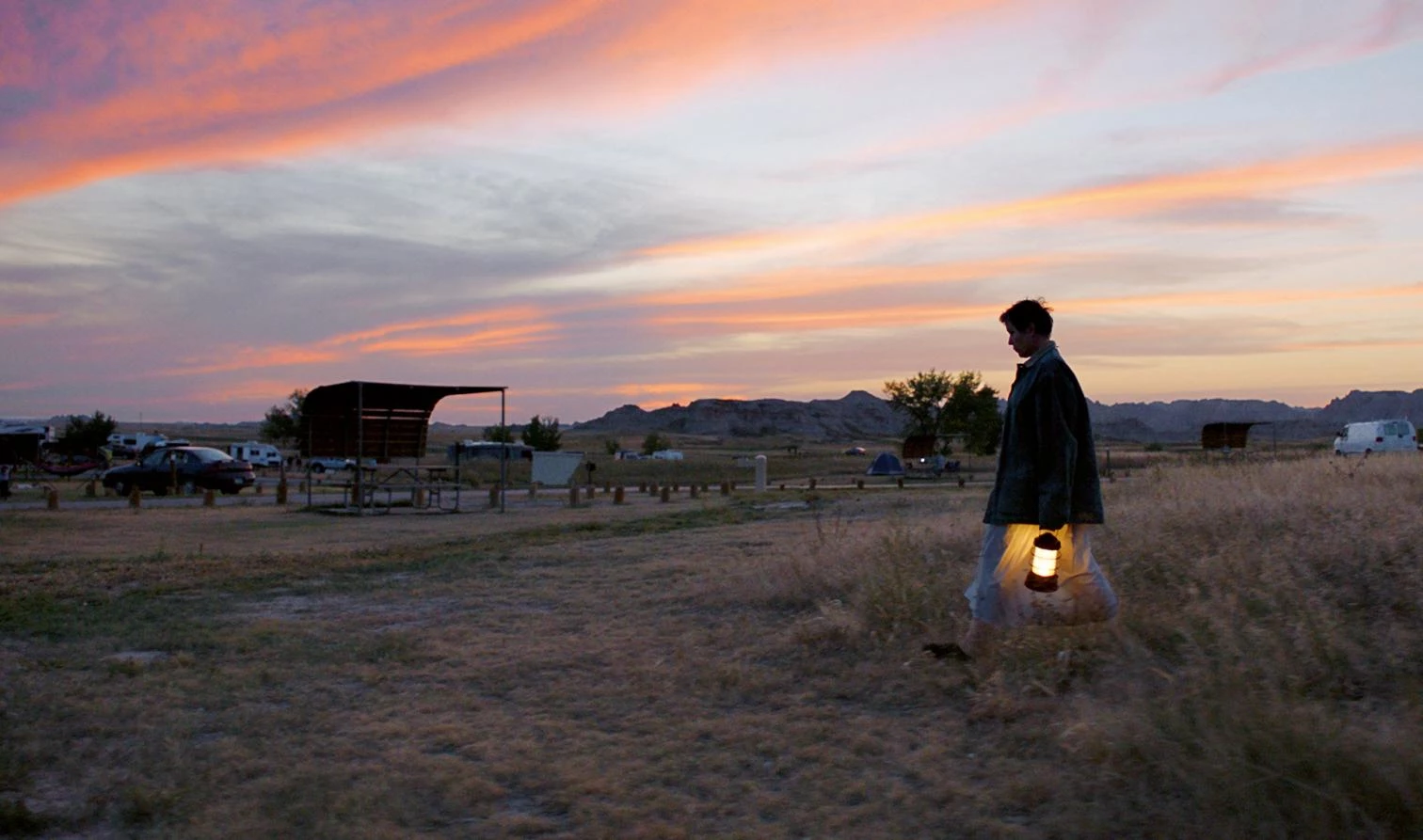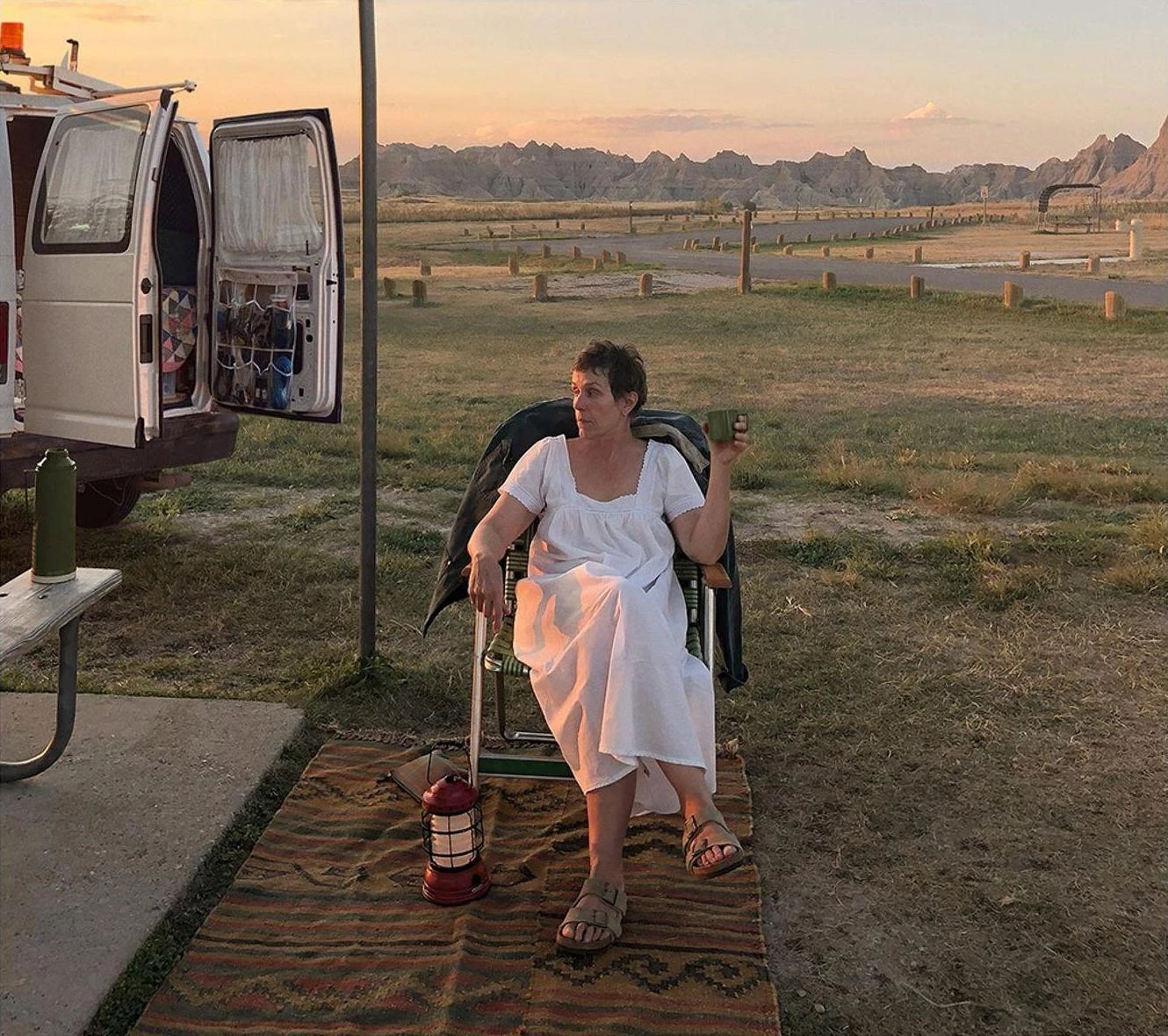
All is dark until a metal door opens. Up close are domestic objects, behind is the woman who has opened the door, and in the background we see a snow-covered field. In the second shot she’s putting boxes in a van and smelling men’s clothing, crying. In this first sequence of the film Nomadland, camera and viewer meet in a built place surrounded by winter nature, and we gather that the woman, Fern, whom we follow throughout the film, is keeping few things, has lost a loved one, and is quitting her old life.
Before this scene, we’ve read a text informing us that in 2011, due to the recession and its effect on the building sector, a gypsum plant in a city called Empire – big name for a small town – went bankrupt and closed down. We also glean that shortly afterwards, Empire lost its zip code. No one gets mail, as the population has all but evaporated. It’s like the start of a dystopia. The disappearance of postal mail is an indicator of the collapse of a way of life.
Fern leaves Empire, hitting the road in her van. The next sequence begins with her face in close-up. What follows is a longer shot showing her alone on a snow-clad field, squatting to relieve herself. Then she resumes the drive. In these three shots are constants which are repeated later: first is the camera mostly following Fern and her van, so the viewer, who is almost always behind her, tries to predict what she’s going to do; second is the alternation of close-ups of the character’s hardened but expressive countenance with long shots of vast natural landscapes; and third is the idea that inhabiting a small mode of transport comes with peculiarities like having to answer nature’s physiological calls in the open air.

Fern’s Ford Econoline is her dwelling. A curtain separates the front seats from her private space, where there’s a table with a lamp, shelves, drawers, a small gas stove, and, attached to the rear doors, a bed so short that she sleeps curled up. Despite the discomforts, she is in symbiosis with her vehicle more than other people are with their real houses, perhaps because it moves, so is almost like a beast of burden. She even christens it, as nomads do their animals. She names it Vanguard.
Most of the characters in Nomadland play themselves and live in wheeled abodes. These are either parked in orderly facilities, such as urban parking lots, or more chaotic, with caravans scattered in peculiar communities like the Rubber Tramp Rendezvous, which recall sects. Even in these campsites there are classes: Fern and her friends enter a huge trailer and are impressed, especially with its having a washing machine and dryer, as they’ve been using sordid public laundromats.
Underlying all this is the dilemma between two lifestyles: the sedentary and the nomadic. Fern has taken up the latter for the sake of sheer survival, declining invitations into the homes of her sister, a friend, and an acquaintance whose daughter asks if it’s true she’s homeless. Her answer: “I’m not homeless. I’m just houseless.” A fellow nomad says: “Home, is it just a Word? Or is it something that you carry within you?” A dilemma brought on by the economic system, as Fern points out to a property agent: “It’s strange that you encourage people to invest their whole life savings, go into debt, just to buy a house they can’t afford.”
They’re nomads because there’s no work available to them that allows them to stay put in one place, and they have to take on odd jobs here and there. Whereas the pioneers of the 19th century pushed West to eventually settle down, most of today’s nomads will never be able to. They will keep moving about, preserving their uprootedness and their freedom to wander into virgin territories.

But Linda May, the real-life protagonist in the book by Jessica Bruder upon which the plot of the movie is based, does intend to build herself a house in the state of Arizona, one she describes as “an earthship that’s a totally self-contained house, built out of tires.” No trash will pollute the environment, she says. “Self-sufficient. It looks like a living piece of art that you’ve made with your own two hands. It’s something that I can leave to my grandchildren. This house would be there for generations. Outlive us all.” She gives more importance to certain features pertaining to current times than to basic aspects of residential construction, such as form or uses.
Fern’s journey starts off in the plains of Nevada and passes through South Dakota, Nebraska, and Arizona to get to the coast of California, and it looks like her goal, like that of so many other voyages, is the ocean horizon and its promise of freedom. But she eventually turns around and, coming full circle, returns to Empire by the same road she took off from, disposes of the belongings she has been keeping in a storage unit, visits the abandoned factory, and sets foot into an office that may have been once hers. Then she walks through the bare streets and heads for her former house, also empty and dirty, goes from room to room, steps out onto the backyard, crosses a fence, and strides on toward a field with patches of snow. Then she’s on the road again.
Nomadland begins with a text and ends with another: “Dedicated to the ones who had to depart. See you down the road.” If the opening words amount to a death certificate of a city and way of life, the closing lines offer some kind of hope for those who have lost it all, the idea that they can always meet again somewhere along the way, even though there is no place to go back to.
Jorge Gorostiza is an architect and a film scholar.





